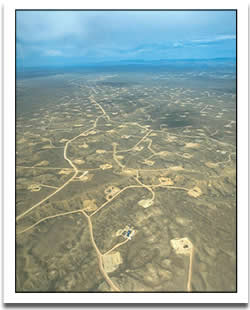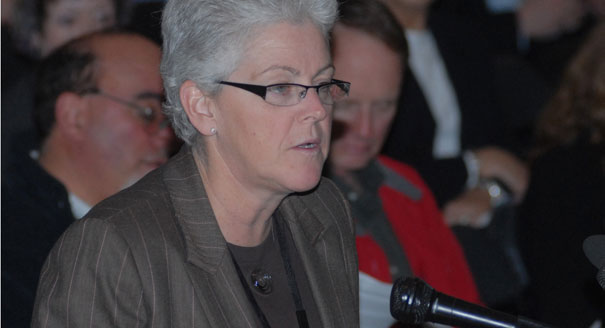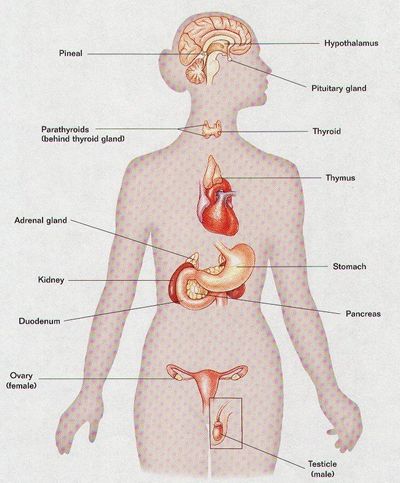Archive for February 2013
Documents Show Dallas and Trinity East Partnership Extends to Previously Undisclosed Irving Well That Had Casing Failure
 Second well is waiting to open until “construction of a new production facility,” raising questions about true nature of pending refinery and compressor station near soccer field
Second well is waiting to open until “construction of a new production facility,” raising questions about true nature of pending refinery and compressor station near soccer field
(Dallas)—Scouring Texas Railroad Commission paperwork, Dallas residents have unearthed a previously undisclosed partnership between the City of Dallas and gas company Trinity East involving an gas well that experienced a cement casing failure in 2009 near the Trinity River in Irving.
According to documents submitted by the City of Dallas and Trinity East – working under the name of “Expro Energy” – Dallas became one of five lessors of a gas well located on University of Dallas property in February 2009, while Trinity East/Expro became the lessee. Sometime that summer, the cement casing of the well “parted” at approximately 2800 feet below the surface. It’s not known what environmental damage, if any, was caused by this failure so close to the Trinity River.
“We spent considerable time and money trying to correct this problem…. We expect to move back on and make another attempt to complete this well sometime in the future,” wrote Trinity East/Expro representative Jerry Eslew to the RRC in February of 2010.
Cement casing is installed around the drill pipe in order to form a barrier blocking methane, brackish water, or drilling chemicals from migrating up to contaminate drinking water aquifers above the well. But the cement doesn’t go all the way down the well itself, and errors, mishaps or geological traps can leave channels running through the cement.
Despite that incident, Dallas remains linked to Trinity East/Expro in Irving as one of 26 lessors to another well permit in the same area at the University of Dallas that got approved in May of 2010. However, that well has been reported producing almost no gas.
Trinity East is in the middle of a hard-fought battle to get approval of three gas drilling and production permits at sites along the Trinity River floodplain in Northwest Dallas, including two that are located in City of Dallas park land. On February 7th, the Dallas Observer published a “secret agreement” signed by Dallas City Manager Mary Suhm in 2008 that pledged city staff support to get those permits approved.
Citizens found indications that Trinity East/Expro may be waiting to open at least one gas well in Irving until the City of Dallas approves the permit of the company’s proposed “Luna Vista Processing Plant,” located a short distance away.
“The subject well (UD LEASE, WELL NO. 1-H) is currently closed in (sic) waiting on a gas pipeline prior to stimulation and construction of a production facility,” according to a February 29th, 2009 letter from Trinity East/Expro to the Railroad Commission.
Trinity East representatives have repeatedly said that the refinery and compressor station, just 600 feet west the City’s giant Elm Fork Athletic Complex, would only take gas from the three city of Dallas well leases currently under consideration for permitting by the City Council. But the company owns wells in Farmers Branch as well as the ones in Irving, and its representatives stated in an interview with the Dallas Observer that its “master plan” depends on Dallas being a hub.
Now neighborhood and environmental groups think they know what that means – a nexus of pipelines converging on a refinery operation and compressor station that keeps growing as more and more wells are connected to it, including at least one that’s already partially owned by the City of Dallas.
“What citizens have uncovered shows there’s a much broader and deeper relationship between Trinity East and the City of Dallas than anyone at City Hall has admitted up to now. This news points to a real conflict of interest between Dallas the gas well operator, and Dallas the municipal regulator,” said Jim Schermbeck of the local clean air group Downwinders at Risk, one of the organizations involved in the Dallas Residents at Risk alliance whose members combed the online and regional files of the Railroad Commission to obtain the documents.
Included in the packet of new-found information about the Irving wells released by the alliance today was a list of questions it says should be posed by Dallas City Council members to the City Manager as part of her scheduled Wednesday briefing to the Council on the Trinity East permits.
They include inquires about whether the Council was notified by the City Manager of the Irving leases with Trinity East/Expro, whether any royalties have been paid to the City by the company, and what the City knows about any environmental impact of the cement casing failure near the Trinity River.
“Today’s disclosures raise many new questions that should be answered by the City Manager, in addition to putting the recent actions of the city on behalf of these permits in context,” said Schermbeck. “
In particular, he thought the City Manager should be held accountable for withholding information about the City’s partnership in a Trinity East well, in addition to the 2009 casing failure, at a time when the City of Dallas is considering approving Trinity East permits for new gas well sites.
“It’s tantamount to a judge not disclosing that he owns a business with the defendant whose case he’s hearing.”
Most Anti-Smog Money in Texas Doesn’t Go to Fight Smog
 Only 12 cents out of every dollar collected in DFW to pay for anti-smog initiatives actually goes toward cleaning the air, according to representatives of the North Central Texas Council of Governments quoted in a new Texas Observer article. Most of the money collected goes into the State's general fund to pay for other state programs.
Only 12 cents out of every dollar collected in DFW to pay for anti-smog initiatives actually goes toward cleaning the air, according to representatives of the North Central Texas Council of Governments quoted in a new Texas Observer article. Most of the money collected goes into the State's general fund to pay for other state programs.
Texas residents pay a small fee whenever they transfer a vehicle title or get their car emissions tested. Those fees are add up into big money every year – an estimated $772 million over the next two years. That funding is supposed to assist low-income families to get their cars repaired, and to help businesses purchase cleaner on and off-road engines. But only about $134 million is actually targeted for those clean air measures in the state's smoggiest areas – DFW, Houston and Austin-San Antonio. Everything else will be diverted according to a proposed state budget.
It's not like we don't need the money. For the last two years, DFW smog has gotten worse, and we're in our second full decade of failing to meet the Clinton-era smog standard even as we're looking at a 2018 compliance date for a much more stringent one implemented by the EPA last year. That means we have to have to go three years without exceeding that standard at any one monitor – beginning in 2015. That's not very long from now and that's why that money is needed now. Not surprisingly, local government officials are a little upset.
“Our local and elected officials see it as county money that’s not coming back to the county,” said Shannon Stevenson, program manager at the North Central Texas Council of Governments.
The Capital Area Council of Governments, an association of ten Austin-area counties, has considered a plan to opt out of the program altogether, said Adele Noel, air quality project manager for Travis County.
“Honestly, we cannot operate if they do not give us more money,” Noel said.
So the North Central Texas COG is teaming up with other local governments in the state's largest urban areas and trying to redirect the anti-pollution funds back to their original purpose. With so many members of the legislature from districts affected by the funding shortfall, you might think they stand a good chance. But those other programs that get the money now also have their advocates, and not every member of the Lege from an urban county is necessarily sympathetic to clean air concerns. Stay tuned.
Timing is Everything: National Fracking Conference Coming to Dallas
Just as the long-running fight over gas drilling in Dallas explodes into a full-fledged City Hall scandal, here comes a national fracking conference to spotlight how the rush to drill can create more problems than it solves.
On Saturday March 2nd, and Sunday March 3rd, DFW residents have a great opportunity to take a break in the fight and see superstars of the citizens movement in person when the "Stop the Frack Attack" conference settles in for a two-day run at the Best Western Plus Dallas Hotel & Conference Center at 8051 Lyndon B Johnson Freeway just east of Coit (map).
You can look at a full schedule of speakers and workshops here, but there are some events that stand out:
SUNDAY, MARCH 3rd
9:00 am – 9:45 am: Morning Plenary: "Health Impacts of Fracking" with Wilma Subra and Nadia Steinzor. Dr. Subra was a 1999 MacArthur "genius" award winner for helping “ordinary citizens understand, cope with and combat environmental issues.” She's one of the leading scientific voices in the grassroots environmental health movement. Nadia Steinzor is the Marcellus Shale organizer for national group Earthworks. You you only see one presentation, you might want to make it this one.
SUNDAY, MARCH 3rd
2:50 pm -3:45 pm : "Connecting Fracking, Climate Change, and Clean Energy" with Dr. Tony Ingraffea. Dr. Ingaffea was the Cornell University scientist who first called BS on the gas industry's claims of being 100% climate friendly. As his presentation points out, the mining and production of gas is not climate friendly at all and makes it a worse choice than coal in some respects.
SUNDAY, MARCH 3rd
4:15 pm – 5:30 pm: Closing Plenary with Deborah Rogers.
Deborah Rogers is a Ft. Worth based economic analyst whose own family property was put under siege by fracking in Cowtown. She just released a new report on the "bubble economics" of the gas industry and will close out the weekend with a presentation on the real economics behind the shale boom.
You don't get to see these three headliners at the same gig very often outside of either coast, so take advantage of them showing up at your front door just as we're about to start another chapter in the Dallas Drilling Scandal, with a City Plan Commission vote scheduled for March 21st. Be prepared.
Besides these great speakers, there are also lots of workshops:
Fracking 101
Community Organizing & Leadership Development
Pipelines, Compressor Stations and Other Infrastructure
Spokesperson training
Nonviolent Direct Action
A full two days. Nationally-known speakers. A bunch of workshops where you'll learn the things you need to know and meet people like yourself. All for only $50 bucks – and that includes lunch both days. Register here now. See you there.
Study: Gas Drilling Cause of Wintertime Smog in Utah Basin
 98 to 99 percent of the Volatile Organic Compounds (VOCs) and 57 to 61 percent of the Nitrogen Oxide (NOx) found in Utah's Uninta's Basin are emitted by gas drilling or production sources, and are responsible for worsening smog there, according to a new Utah Department of Environmental Quality study of air quality there.
98 to 99 percent of the Volatile Organic Compounds (VOCs) and 57 to 61 percent of the Nitrogen Oxide (NOx) found in Utah's Uninta's Basin are emitted by gas drilling or production sources, and are responsible for worsening smog there, according to a new Utah Department of Environmental Quality study of air quality there.
The Basin is one of several large rural Western areas of the country that also includes stretches of Colorado and Wyoming where gas drilling has caused the phenomena of "wintertime ozone," creating smog as bad or worse than Los Anageles or Houston.
Despite low snowfall this year, the Basin has still seen more than a dozen episodes of high ozone so far. The ozone readings can reach nearly twice the limit considered safe by the EPA and last for weeks at a time. In 2011, levels reached 139 parts per billion, nearly double the federal health standard. About 1,100 wells were drilled that year.
Leaks from pipes and tanks and fumes from pumps, dryers and compressors were major sources of volatile organics. Drill rigs and fracking were sources of nitrogen oxides and methane, according to the study.
While making no recommendations,the report did say that reductions in certain kinds of volatile organic compounds, including benzene and toluene, “could be particularly effective since they are not only a direct health concern but are more active in ozone production than many other” VOCs.
EPA Staffer Who Oversaw Cement Plant Rule Gutting Will Be Your Next Administrator
 According to a number of different Washington-DC based news outlets, President Obama has picked current EPA Director of Air and Radiation, Gina McCarthy, as his choice to head up the entire Agency for his second term.
According to a number of different Washington-DC based news outlets, President Obama has picked current EPA Director of Air and Radiation, Gina McCarthy, as his choice to head up the entire Agency for his second term.
McCarthy was the EPA staffer in charge of explaining to citizens why new cement plant emission rules the Agency and the President had already signed-off on in 2010 were gutted last year just prior to adoption, despite unanimous citizen opposition to the changes at a national hearing at Arlington City Hall last August. Instead of a 2013 compliance deadline, the industry now has until 2015. And real time particulate matter monitoring was tossed in favor of a using a formula every so often.
McCarthy's paraphrased explanation: "These new rules are gonna make kilns ever more awesome!"
In a meeting last year with kiln activists, she couldn't explain why the rule was being changed, who wanted it changed, or where the order to change it came from. It was a mystery even to the most cynical DC-based environmentalists. And now she's in charge of the whole show.
Some are interpreting McCarthy's promotion as a first step in the Administration taking executive action on climate change, since she headed up some recent initiatives on that front.
A Boston native, McCarthy came to Washington after serving as the top environmental regulator in Massachusetts and Connecticut under Democratic and Republican governors.
Former Massachusetts Governor Michael Dukakis, a Democrat, appointed her chair of a council to oversee a review of a proposed hazardous waste incinerator in the Boston area in 1990.
She later served as an environmental policy adviser to then-Massachusetts Governor Mitt Romney and launched the state's first Climate Protection Action Plan. Romney was Obama's Republican opponent in the 2012 presidential election.
In 2004, McCarthy was appointed to head Connecticut's Department of Environmental Protection under then-Governor Jodi Rell, also a Republican, and helped lead the state into a carbon cap-and-trade system for Northeastern states, known as the Regional Greenhouse Gas Initiative.
New Texas Study Confirms That Smog is Bad For Your Heart
 Heart attacks are more common within just hours of high ozone and/or particulate matter levels according to a new large study of air pollution health effects that was sponsored by Rice University.
Heart attacks are more common within just hours of high ozone and/or particulate matter levels according to a new large study of air pollution health effects that was sponsored by Rice University.
Evidence already links airborne particles with heart disease and lung problems but the new findings are the first to show that high ozone may immediately raise the risk that a person's heart will stop beating.
"Heart patients should consider when there are high ozone levels that they should take extra care of themselves," lead author Katherine Ensor of Rice University in Houston told Reuters Health.
Ensor and her colleagues looked at Houston hospital records from 2004 to 2011 and compared them with records from hospitals outside the city.
Cardiac arrest risk went up by 4.4 percent for every 20 parts per billion of ozone above average (50-60 ppb) within the previous three hours. For every increase by 6 micrograms of fine particulates per cubic meter of air in the prior two days, cardiac arrests rose by 4.6 percent. In the summer, it's not unuual for DFW monitors to record 1-hour ozone levels of over 100 ppb or more, and 8-hur averages in the 80 to 90 ppb range. There are only two urban monitors for PM pollution, but those have been trending up over the last few years as ozone levels have been rising as well.
Because there are many risk factors for cardiac arrest, an additional link to ozone could have big implications for people with chronic medical conditions living in urban areas, according to Dr. Comilla Sasson of the University of Colorado, who was not involved in the new study.
WHO: “Mounting Evidence” Endocrine Disrupting Chemicals Harming Human Health
 On Tuesday, and international team of of 16 scientists from 10 nations released a new report that concludes evidence linking hormone-mimicking chemicals to human health problems has grown stronger over the past decade, becoming a "global threat" that should be addressed.
On Tuesday, and international team of of 16 scientists from 10 nations released a new report that concludes evidence linking hormone-mimicking chemicals to human health problems has grown stronger over the past decade, becoming a "global threat" that should be addressed.
A joint effort by the World Health Organization and the United Nations Environment Program, the report is meant to give policymakers the latest information on chemicals that seem to interfere with the normal development of hormones in people and wildlife. It represents a significant change from a previous 2002 report that called such evidence weak.
The panel found that endocrine-related diseases and disorders are on the rise. There is now “emerging evidence for adverse reproductive outcomes” and “mounting evidence" for effects on thyroids, brains and metabolism, the report summary says.
Besides everyday consumer exposure through packaging, cosmetics, and food, local DFW industrial sources for endocrine disrupting chemicals include combustion sources of any kind, waste-burning, oil and gas production, and plastics manufacturing. In fact, it's the ubiquity of the pollutants that makes it hard to tell which exposure can have what health effect.
One problem vexing those who study endocrine-disrupting chemicals is the vast number of them – about 800 are known – and how they may interact with one another. They’re in a variety of goods – such as pesticides, flame retardants, plastics, cosmetics and canned foods – and research has only touched the “tip of the iceberg,” according to the report.
“The vast majority of chemicals in current commercial use have not been tested at all,” the authors wrote in the summary.
“We seem to be accepting as a society that it’s acceptable to load up our next generation with chemicals in an unregulated manner and hope they’re not bad,” said Thomas Zoeller, a professor at the University of Massachusetts, Amherst and a co-author of the report. “We need to change that entire culture.”
Congressional Report: Environmental Causes of Breast Cancer Must be Researched
 "Most cases of breast cancer “occur in people with no family history,” suggesting that “environmental factors — broadly defined — must play a major role in the etiology of the disease.” That's the conclusion of something called the Interagency Breast Cancer and Environmental Research Coordinating Committee, which came out with a report last week.
"Most cases of breast cancer “occur in people with no family history,” suggesting that “environmental factors — broadly defined — must play a major role in the etiology of the disease.” That's the conclusion of something called the Interagency Breast Cancer and Environmental Research Coordinating Committee, which came out with a report last week.
In 2012, Breast cancer was diagnosed in 227,000 women, killed 40,000, and cost more than $17 billion to treat in the United States.
Yet only a fraction of federal research funding has gone toward examining links between breast cancer and ubiquitous chemicals such as the plastic hardening agent bisphenol A; the herbicide atrazine; and dioxin, a byproduct of plastics manufacturing and burning, says the report, prepared for Health and Human Services Secretary Kathleen Sebelius.
“National survey data show that many of these chemicals are present in the blood or urine of children and adults in the United States, and some EDCs are present in 100 percent of the people sampled. Exposure to such compounds early in life can be especially dangerous, the report says.
All told, some 84,000 chemicals are registered for use in the United States. But complete toxicological screening data are available for only 7 percent of these substances, says the report, which calls for “enhanced testing of chemicals, especially classes of chemicals combined together as a mixture, for effects on the mammary gland and breast …”
“Prevention needs to be as important as other investments that are made in screening, treatment and access to care,” Jeanne Rizzo, co-chair of the committee and president of the San Francisco-based Breast Cancer Fund said in an interview. “There really is a problem, and until we address it we’re going to continue to have a quarter of a million new cases every year.”
The report’s release comes three months after a Center for Public Integrity article detailing a study of female plastic automotive parts workers in Windsor, Ontario. That study found that women employed in the chemical-intensive industry were nearly five times as likely to develop breast cancer, prior to menopause, as women in a control group.
“That was essentially an uncontrolled human study,” Rizzo said of the Windsor workers. “We can’t do that. We need to learn from animal studies.”
In the United States, an estimated 150,000 female workers in the plastics and synthetic rubber industries are likely exposed to many of the same chemicals as the women in Windsor, including polyvinyl chloride, or PVC, plastic; acrylonitrile; formaldehyde and styrene.
At least 216 chemicals, including endocrine-disrupting substances like bisphenol A, have been associated with mammary gland tumors in animals. Endocrine-disrupting chemicals, or EDCs, are used to make plastics and pesticides and found in products such as furniture, metal food cans and cosmetics.
But environmental exposures have gotten relatively little attention from researchers.
The National Institutes of Health spent almost $2.4 billion on 2,910 breast cancer research projects from fiscal year 2008 through fiscal year 2010. But only about 27 percent of these projects had to do with prevention, and just 10 percent could be considered “environmental health research.”
Of the $2.8 billion appropriated by Congress from 1992 through 2012 for the Department of Defense Breast Cancer Research Program, 75 percent went toward “basic biology and treatment research, with only 3 percent for prevention and cancer control projects."
The committee recommends that researchers prioritize “chemicals that are produced in high volumes for which there is biologically plausible evidence of their role in the development of breast cancer.”
It also suggests that regulators improve oversight of “cosmetics and personal care products as well as household cleaning and food containment products,” and step up environmental monitoring, especially of “underserved and under-researched groups as well as ‘fenceline’ communities that are in close proximity to industry or waste sites.”
Study Links Hearing Loss to Low Levels of Lead and Camium Exposure
 Exposure to extremely low levels of Lead and Cadmium can lead to hearing loss of up to 20% according to a new study published on Monday.
Exposure to extremely low levels of Lead and Cadmium can lead to hearing loss of up to 20% according to a new study published on Monday.
"The metal levels found to influence hearing were below national workplace standards set by the Occupational Safety and Health Administration. Although the study does not establish causality, the results support previous animal and humans studies that link these heavy metals to hearing loss.
Animal studies show lead and cadmium have a wide array of toxic effects on the hearing system. Both can affect the inner ear where sound is received and sent on to the brain.
Human studies are limited, but exposure to high levels of lead has been linked to hearing loss in children and males exposed at work. Studies in teens have also linked cadmium exposure to hearing loss."
Lead is used in electronics and ammunition, and of course can be found in the fallout of lead smelters like the one in Frisco that Exide Corporation operated until recently. In the United States, the most common sources are old building with lead-based paint, contaminated soil, household dust and drinking water.
Cadmium is widely used in batteries, paint pigments and metal plating. It's also a by-product of ore smelting and released in the air from the burning of fossil fuels. Most people are exposed to cadmium through diet, air pollution and smoking.
Hearing was tested at sound frequencies of normal speech so a loss could make it harder to hear conversations. Lead and cadmium were measured in blood samples.
When lead levels were higher, so were cadmium levels. Higher levels of the metals either alone or together related to more hearing loss, especially in older adults.
Adults with the highest lead and cadmium exposures had more hearing loss. Lead levels above 2.8 micrograms per deciliter of blood related to an 18.6 percent rise in PTA and cadmium levels above 0.8 micrograms per liter had a 13.8 percent increase in PTA.
The CDC recently recommended an "action level" of lead in blood of 5 micrograms per deciliter based on the last decade of research, most of which suggests there is no safe level of exposure to lead. This study certainly points in that direction.
Despite banning lead from gasoline and paint, ongoing testing shows that the average concentration of lead in the American bloodstream is still two orders of magnitude higher than natural human levels.
Perry’s Coal Rush Ends With a Whimper, not a Bang
 In 2006, Governor Perry announced that he was going to fast track over a dozen new coal plant permits in East and Central Texas. There was an instant hue and cry. Not only citizens but cities protested. Believe it or not, the same Dallas City Hall now prostituting itself for gas refineries was actually out organizing a multi-municipality alliance with Houston against the coal plants and Perry. Downwinders launched its now infamous "Smokestack Love" cross-state tour, complete with a 16-foot long parade-quality float with a smokestack-inhaling Perry.
In 2006, Governor Perry announced that he was going to fast track over a dozen new coal plant permits in East and Central Texas. There was an instant hue and cry. Not only citizens but cities protested. Believe it or not, the same Dallas City Hall now prostituting itself for gas refineries was actually out organizing a multi-municipality alliance with Houston against the coal plants and Perry. Downwinders launched its now infamous "Smokestack Love" cross-state tour, complete with a 16-foot long parade-quality float with a smokestack-inhaling Perry.
Unfortunately, opponents weren't able to stop all the plants. A leftover 1980's permit for the Oak Grove lignite plant north of College Station did get approved over the objections of local landowners. But most were derailed by fierce resistance or lower natural gas prices brought on by the heavy exploitation of the Barnett and Eagle Ford Shale plays.
Last Thursday, the final domino of that proposed 2006 wave of new coal plants fell with the announcement that the White Stallion plant near Bay City was being canceled.
"The news marks a victory for opponents of coal in Texas, notably the Environmental Defense Fund and the Sierra Club, who have worked for years to oppose the White Stallion and other coal power projects in the state. At this point, there are no longer any major new traditional coal power plants planned in Texas. All of the new projects are primarily natural gas and wind power, with some solar."
Congratulations to all those who worked so hard to see these bad ideas finished off for good. But remember there are still older coal plants in East and Central Texas that are among the largest point sources of pollution in the state, and the nation. Having now eliminated new potential clean air threats from the last of the Perry-proposed coal rush, the Sierra Club is turning its attention to the existing plants that are long past their prime and need to be replaced with cleaner sources of energy.

